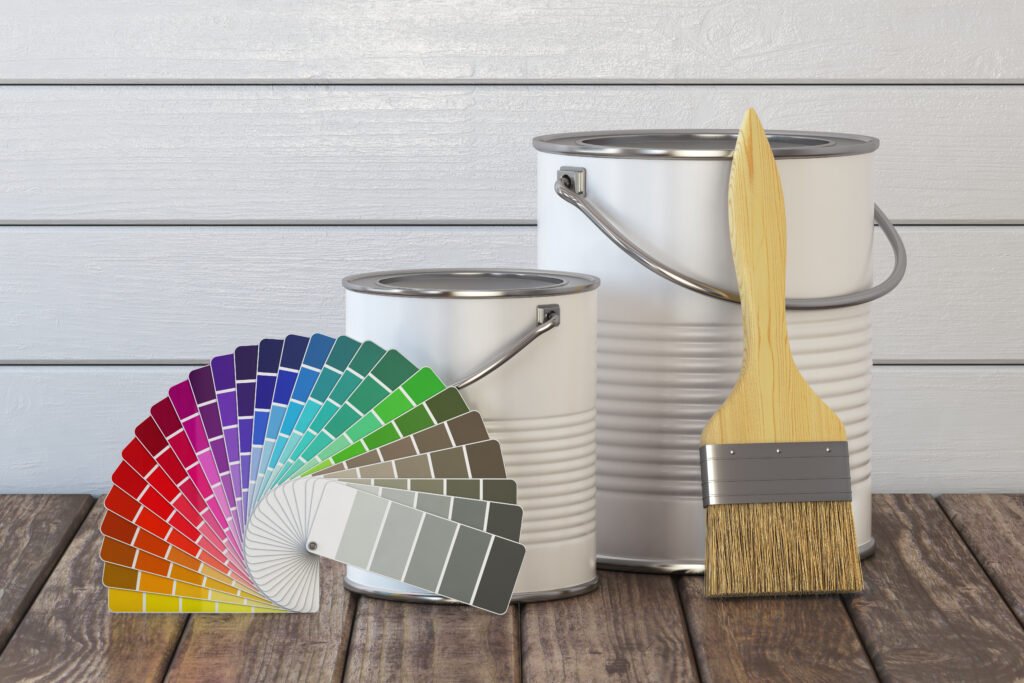Wood is an integral material used in house during finishing works in making of doors, cabinets, consoles, door frames, architraves, jamb frames etc. Wood is a natural material and is available in unfinished form and it requires finishing. Finishing of wood is done by a procedure which is called “Polish” which was explained in detail in last article. Another method to give finished look to wood, cabinets, furniture etc is known as “Deco paint”. Deco has a completely different final finish look as compared to polish, and its method of application and technicalities are also different. In this article we will discuss in detail the method of application for deco paint and material required to perform this job.

A typical deco painted furniture
Like polishing, deco paint also requires experienced professionals and expensive material. Before discussing deco technicalities let us see which materials are required:
- Sand paper #80 and #150
- Zind powder
- Plaster of paris
- Dana sharesh (دانا شریش)
- Sealer
- Thinner
- Deco grey primer
- Deco potein
- Norton sandpaper #240
- Dico color as per requirement
- Lacquer
All above materials are easily available in market from paint shops in different brands. Branded thinner, sealer and lacquer should be used for best finish however in case of budget constraints, open thinner, sealer and lacquer are also available in market at lower prices. E.g branded thinner is available at the rate of 325-350 Rs/litre whereas open thinner can be bought at 170-250 Rs/litre.
Step 1 Grinding
The process starts from sand paper(ریگ مار) which is used to grind the element that is to be deco painted. Grinding is done manually by hand vigorously to smoothen the surface and remove major bulks and unwanted particles. Initial grinding is done using 80# sandpaper and later the surface is smoothened using 150# sandpaper. Before grinding make sure all nails that were used in making of door by the carpenter are properly inserted into the wood and nail heads are not visible.
Step 2
After achieving smooth surface, filling is done by making a mixture of zinc powder and plaster of paris (1:1) along with the paste of dana sharesh (دانا شریش). Dana sharesh is available commonly on paint shops at cheap price of around 300 Rs/kg in form of grains and it is converted into paste by boiling 1 kg grains in 250 ml of water.
Step 3
Once filling is complete, sandpaper #150 is used again to smoothen the filled surface.
Step 4
At this stage two coats of sealer are applied on whatever surface is being deco painted. Sealer is applied using spray gun and special care should be taken for safety of surrounding surfaces and personal who is applying sealer should use face mask.
Step 5
Norton sandpaper #240 is used for another grinding session after applying sealer to achieve more smoother surface. Another material required at this stage is deco primer in grey color. Two coats of deco paint grey primer are applied followed by 4 coats of deco potein filling. Norton sandpaper #240 is again used at this stage to achieve final smooth surface prior to color application.
Step 5
Desired color of deco paint needs to be finalised by this stage and once decided, it is mixed in thinner. Deco color is available in liquid form and 1 litre color is mixed in 2.5 litres of thinner. It is applied on surface using spray gun in as per on site requirement number of coats.
Final Step 6
Deco paint finishing can be done either in matt (non shiny) or gloss (shiny) looks and decision is to be made at this stage. Lacquer is another liquid material easily available from paint shops, both matt and gloss finish has separate lacquers. It is applied as final coating using same method as that of sealer i-e spray gun. For matt finish 2 coats of lacquer are required whereas for gloss finish 4 coats of lacquer are required. Once complete, deco painted surface should be properly packed by polythene packing sheets to keep it safe from dirt.

